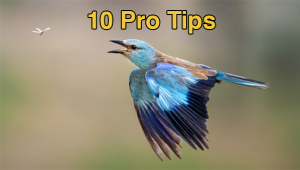The NEW State Of Stock Photography; Times Have Changed, And So Has The Business
What's new in the stock photography business? As most photographers already
know, the business of stock photography has changed dramatically in the last
five years. It no longer can be supplied with photos left over from an assignment
or old photos sitting in a file drawer. Stock photo sales can be a potential
profit center, but only for those willing to put in the time and effort to understand
the changes and work with the new "state of stock."
First, you will need to expand the scope of what you are doing by creating specialty
"collections" and not just one or two of them. Multiple collections
create more stock sales opportunities. You will need to look at every assignment
for its stock potential. You will need to create self-assignments for stock
that will require an investment of equipment and expertise. Finally, you will
need to decide how to best market your stock in today's crowded marketplace.
 |
|
|
To get an insider's view on these changes we recently talked with a veteran in the stock photo business, Ellen Boughn. I first met her when she owned the After-Image stock photography agency in Los Angeles. Boughn has over 25 years experience in the stock image business, including being the founder of After-Image; president, Tony Stone/L.A.; executive editor and content director, Corbis; vice president of photography, ImageBank/Artville (Getty); director of development, Workbookstock; and senior editor/ consultant to CEO, Punchstock. She is versed in all aspects of the stock photography business and works to assist both photographers and stock agencies in solving business and image strategy issues. Boughn was on the PLUS Advisory Council and has qualified as an expert witness in matters relating to image and estate valuation and other issues relative to stock photography. Today, she is vice president of content strategy at SuperStock, Inc. (www.superstock.com).
 |
|
|
Shutterbug: First, please spell out the new business choices
clients have for buying stock usage of photography today.
Ellen Boughn: There are at least five different ways to purchase stock usage
that both clients and photographers should be familiar with today.
· Rights-Protected License--Rights granted are for a specific time
period, for a specific industry and/or territory. The licensee is guaranteed
exclusive use of the image within the terms of the license.
· Rights-Managed License--The licensee is granted the right to use
the image for a specific time period, in a specific industry and/or territory
with no promise of exclusivity, although in many companies the licensing history
of the image is available. Although the current trend of photographers to offer
non-image exclusive rights to distributors is distressing to me, as it basically
puts some rights-managed images into the same level of non-protection as royalty-free.
· Royalty-Free--The licensee is granted a broad license to use an
image for an unlimited time with few if any restrictions on usage.
· Subscription--The subscriber is granted an unlimited right to use
an unlimited (or specific number) of images for a predetermined time period.
· Micro-Payment Model--The licensee is granted unlimited royalty-free
rights for a very small amount.
 |
|
|
SB: What are the differences between the different types
of businesses now selling stock usage to these end-clients?
EB: The difference between the major stock agencies and independent
stock agencies is really just one of size and reach. The major agencies have
funds for production and most independent ones don't, or the amounts are
limited. The major agencies tend to be generalists while the independent ones
are generally more niche collections that appeal to specialized buyers. Roger
Ressmeyer's new collection, Science Faction, is an example.
Then there are the stock portals that provide the same marketing services but
require that the photographer do a lot more work in captioning and entering
of metadata than most of the stock agencies. Some of them also do very little
editing of the work and do not require that the contributors be professional
photographers, but they do restrict some of the types of images, for example,
not allowing images that are pornographic.
 |
|
|
SB: How about the photographers who want to sell stock on
their own?
EB: The limitation that the photographer has in licensing stock
from a personal website is one of reach. With hundreds of photographers'
websites out there and the major agencies dominating the market and the independent
ones marketing heavily, it is difficult for a single photographer to drive traffic
(and gain sales) from an independent URL.
However, many well-known photographers whose reputations are big enough among
buyers do very well with licensing from their own website. This is generally
because they have a widely known specialty collection.
- Log in or register to post comments
















































